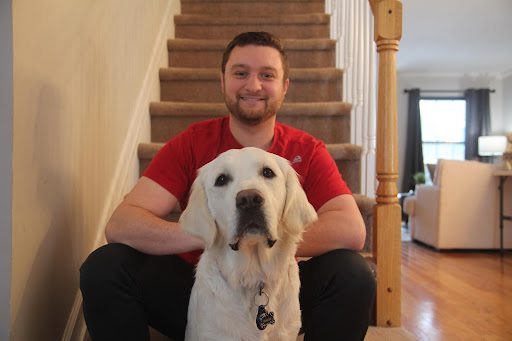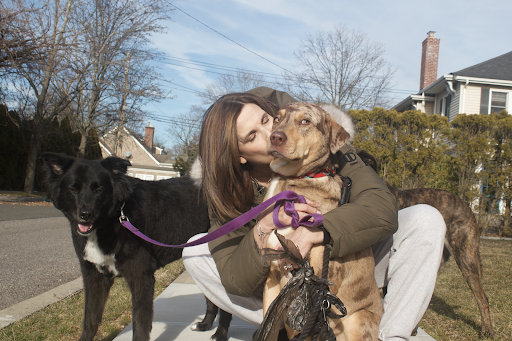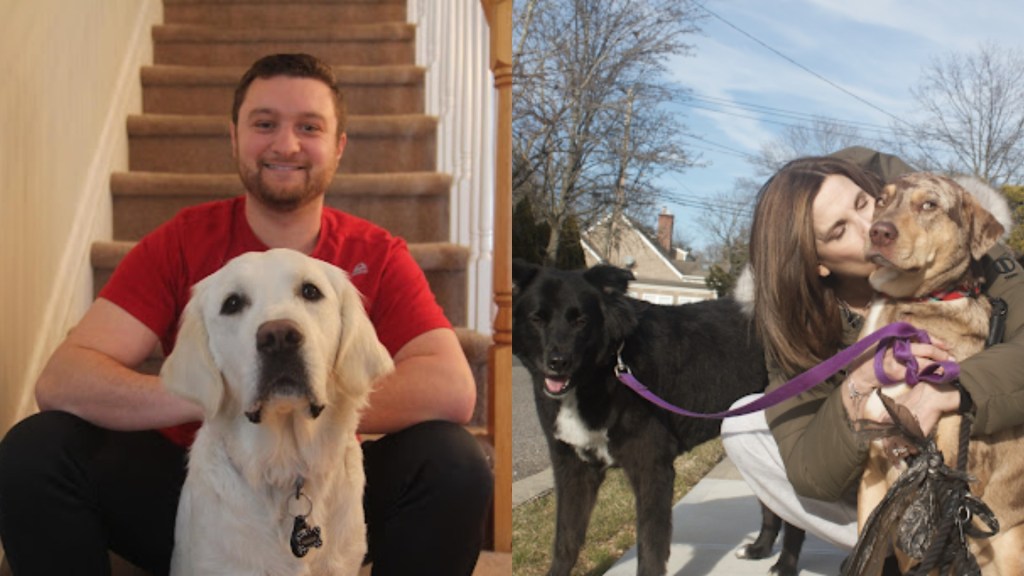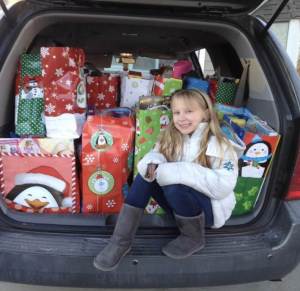By Jasmine Hyman
Matt Goldhirsch spent the first year of the Covid-19 pandemic living with his parents and their dogs in East Northport. When Covid seemed to be on the wane in March 2021, he found his own place in nearby Huntington. He said that following several months of furnishing and enhancing his new space, a piece was still missing: dog companionship — something he was accustomed to his entire life.
“I grew up with three golden retrievers, so something felt off when I started living completely alone,” recalled Goldhirsch. The 28-year-old is an accountant and has worked remotely ever since the pandemic began in early 2020. His new place, a three-bedroom townhouse in a gated community, had plenty of room. He began looking into some shelters and rescue groups but “felt like nothing really clicked, but I knew the right dog would eventually fall into my lap.”
In August 2021, mask mandates began to be lifted and hopes of normalcy were on the horizon. Goldhirsch was in a Target near his parents’ home when he ran into a longtime friend of the family. They were bantering for a couple of minutes when she mentioned to Goldhirsch that she was “looking to rehome her golden retriever, Molly.” Goldhirsch instantly volunteered and agreed to visit the dog.
“We adopted Molly in late February and had a lot of time to bond with her in quarantine,” explained the friend. “But ever since I went back to working full time over the summer and my kids were busy with camp, Molly was crated up and alone all day.” Once the family would come home, the dog would act out by misbehaving.

“It’s just not fair to the dog — I know she deserves more,” she told Goldhirsch. She wanted to rehome her golden retriever with someone who could provide a better life — and Goldhirsch, a longtime dog lover, could do just that.
A few days after the Target run-in, Goldhirsch was introduced to 8-month-old Molly. The friend told Goldhirsch that they were a great fit and that Molly “would be better off with someone who worked at home and could give her constant attention.”
Two days later, Goldhirsch had a new companion. Her name was changed to Maggie because one of his family dogs was already named Molly.
The story of Molly, now Maggie, is not an unfamiliar one. As the realities of quarantine set in, many people looked to adopt dogs to fill the void. Dogs were being adopted by the score in the early days of the pandemic. During the lonely days of social distancing, dogs bore the brunt of being an emotional support entity.
From March 2020 to May 2021, about 23 million, or one in five, American households acquired a cat or dog during the pandemic, according to the ASPCA. However, as in-person jobs and social activities resumed months later, people were unable to care for the pets they once devoted their spare time and attention to. Caring for a dog was more than people bargained for and some busy pet owners soon were scrambling to find a new home for their pandemic pets.
The influx of adoptions was soon met with a subsequent influx of pet surrenders following the height of the pandemic. This trend has been observed by shelter workers, pet behaviorists, and veterinarians.
“There was an insane number of adoptions when Covid first began,” said Cheri Benaharon, an adoption coordinator at Gimme Shelter Animal Rescue based on Long Island. “At some points we didn’t have enough dogs for the demand.”
Approximately 10% of those households that adopted a dog during the pandemic no longer have the pet in their home.
Benaharon began to notice the pattern once mandates were lifted. “Suddenly we saw some owners trying to rehome or surrender pets once they had to go back to work and wanted to socialize again.” Benaharon, also an assistant director of early childhood at an elementary school, has herself adopted three dogs from the shelter, one of which was adopted during the summer of 2020.
Gimme Shelter rescues animals from high-kill facilities, which are shelters that take in a high capacity of stray or sick animals. Many of the dogs are ultimately euthanized because they no longer can be taken care of by the facility or have little potential for adoption. These at-risk dogs from across the country are brought to Long Island in a vehicle every week. The dogs are treated for any medical conditions and are settled with a foster family until they are adopted by a permanent owner.
Benaharon has volunteered at the rescue organization since it was founded more than a decade ago. In her role, she shares information about available dogs on websites and social media outlets, matches the dogs with foster homes, and reviews all the adoption applications.
Since there is no physical location of Gimme Shelter and it is all volunteer-and foster-based, it was able to remain fully functional during the pandemic, whereas other shelters had to close their doors due to state mandates.
Gimme Shelter has a lengthy adoption application process to weed out any uncommitted potential owners. “We told people that a dog is a 15-year commitment, not just a pandemic toy or distraction.”
Despite this, Benaharon witnessed “a handful of Covid dogs being surrendered once life began to return to normal and social distancing guidelines ended.” Gimme Shelter received more rehoming calls than usual once mandates were lifted.
People don’t always contact the shelter to rehome a dog. “Last year I was just scrolling through Instagram one day and saw a dog that someone was trying to get rid of via social media,” Benaharon recalls. “The dog looked so familiar, then all of a sudden I realized it was one from our shelter and it was adopted several months prior.”
“Sometimes new owners don’t realize that these dogs become family members and it is so hard on the dogs to leave them all alone once we get busier.”

Felice Stephens, a volunteer coordinator at another Long Island shelter, Last Hope Animal Rescue in Wantagh, said that she also has witnessed this pattern in the two years since the pandemic began.
“I know some people who tried rehoming their pets once they returned to working in person,” said Stephens. “Leaving dogs alone in a house for more than eight hours is extremely hard, especially for pets who only knew of life in quarantine, when people were home at all hours of the day.”
When the pandemic first began in early 2020, Last Hope was one of the many shelters that were forced to close their doors to the public. At Last Hope, workers volunteered to foster the pets left in the shelter that would have otherwise remained homeless.
Some landlords abandoned no-pet policies during Covid-19 to attract residents. Although once leases were renewed and more tenants were interested in apartments, pets were sometimes not permitted again.
“Housing issues also caused some people to look into rehoming their pets,” said Stephens.
Approximately 10% of those households that adopted a dog during the pandemic no longer have the pet in their home. Anecdotal evidence from pet adoption and pet care professionals continues to suggest that many people gave up dogs after the peak of Covid-19, explaining the realities of this trend beyond the numbers.
Dr. Jeffrey Strom is a veterinarian located in Lynbrook. During the pandemic, he said, his office had “an influx of new dogs,” a situation that has been “a challenge” for his staff. The office had to limit the number of new patients it could take in.
Not only did the end of isolation impact dog owners, but the dogs themselves suffered when their routines filled with constant attention and stimulation changed.
Brian Burton is the founder of Instinct Dog Behavior & Training located in East Harlem. He opened his business in 2009 and began by assisting people with private lessons in training and boarding dogs with behavioral health services. He currently oversees seven Instinct locations across the country and has helped thousands of owners and dogs to date.
Burton said the training and behavioral portion of his business “exploded” during the early stages of the pandemic.
“In 2020 people were getting puppies for the first time and by 2021 we saw an increase of separation anxiety in the dogs because people were going back to work after months in quarantine with these pets,” said Burton. “We saw more dogs having anxiety and reflecting the stressful and unpredictable lives of the owners.”
“We told people that a dog is a 15-year commitment, not just a pandemic toy or distraction,” said Cheri Benaharon
First-time and veteran pet owners alike found this increasingly difficult to deal with.
Burton also attributes the anxiety of many pandemic puppies to the lack of socialization during quarantine. “Most pets adopted in early 2020 weren’t brought out during their critical socialization window, which is 8-14 weeks old for puppies.”
Dogs’ lack of early exposure to people, new environments, and other dogs are all factors that can contribute to separation anxiety, behavioral issues, and fear. “They shouldered a lot of emotional support,” said Burton, adding that he believes the role dogs played during the pandemic was unfair to them and “most of their needs were not met and as a result, many began to act out and develop behavior problems.”
Many pandemic puppies only knew of life in quarantine: constant walks, undivided attention, and family members always being home. Once these norms changed, many dogs developed these behavioral or emotional issues.
Dr. Strom himself adopted a dog during the early months of the pandemic. His own dog “is wary of other people,” he says, adding that “it isn’t a surprise that other animals are experiencing similar anxieties.”
The magnitude of the puppy pandemic is exemplified in the experiences of dog owners, breeders, shelters, trainers, and veterinarians.
Maggie, once a victim to pandemic puppy anxiety and misbehavior, is now a resilient and playful golden retriever in a loving home, says Goldhirsch, and she receives constant attention from him.
He said she instantly overcame her behavioral issues once she was brought into a steady routine and her needs were met.
Sign up for Long Island Press’ email newsletters here. Sign up for home delivery of Long Island Press here. Sign up for discounts by becoming a Long Island Press community partner here.


























